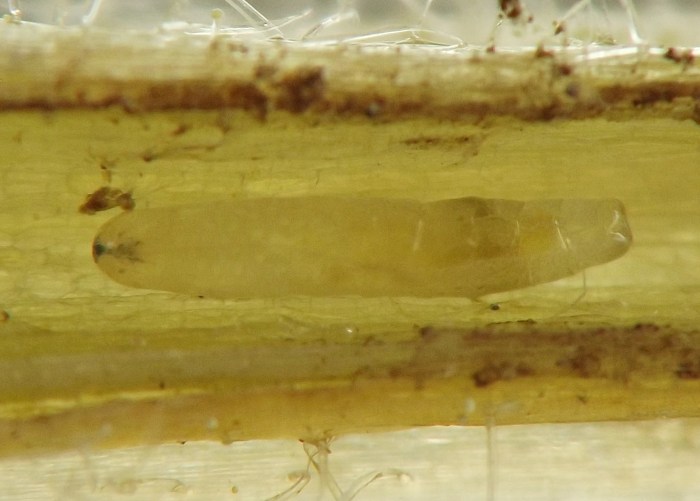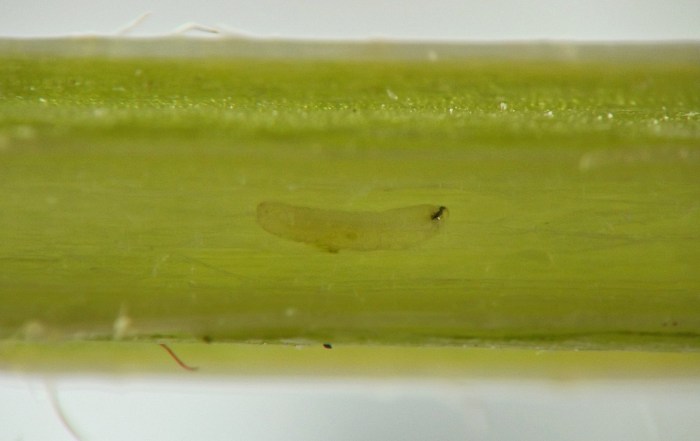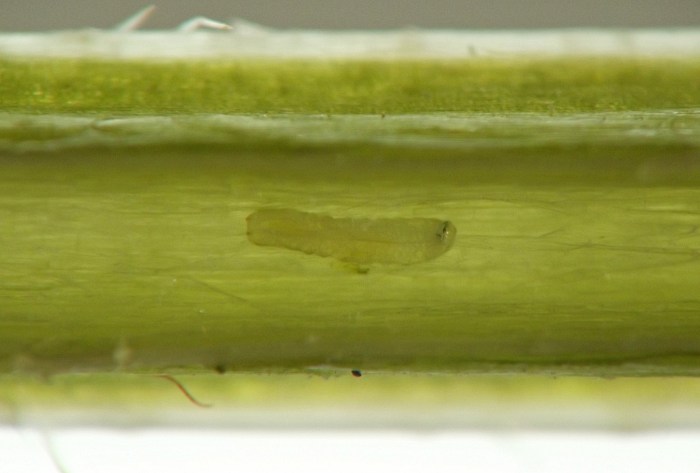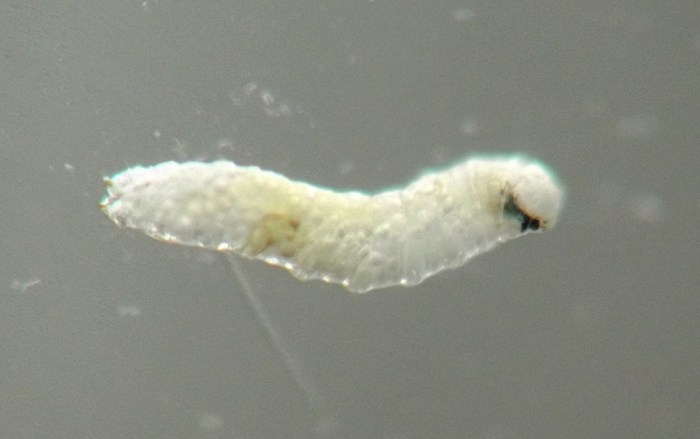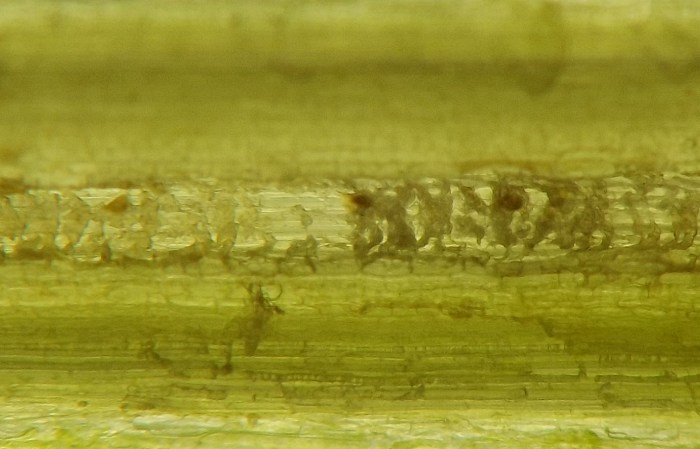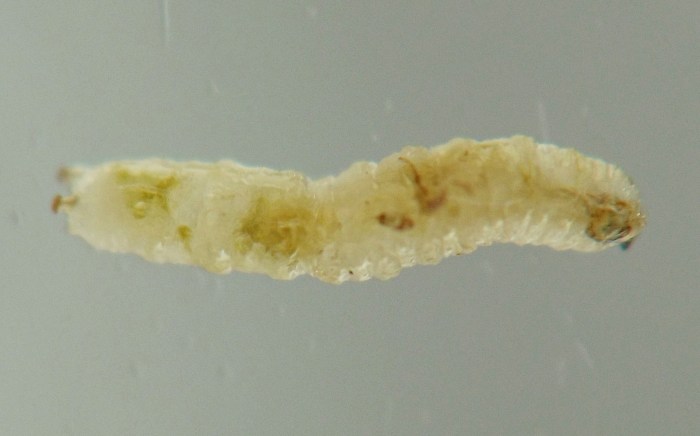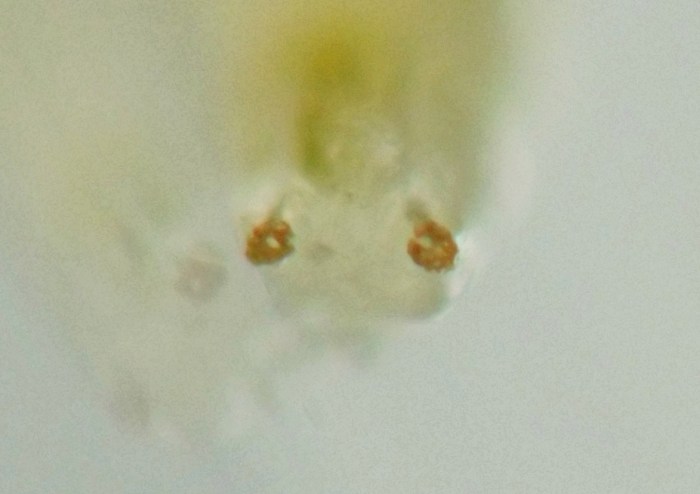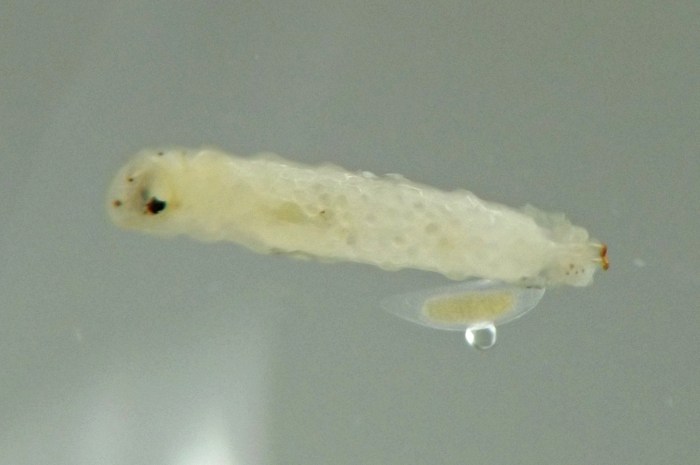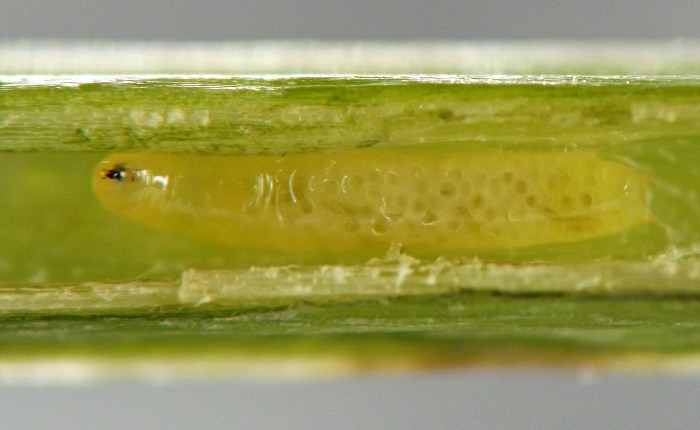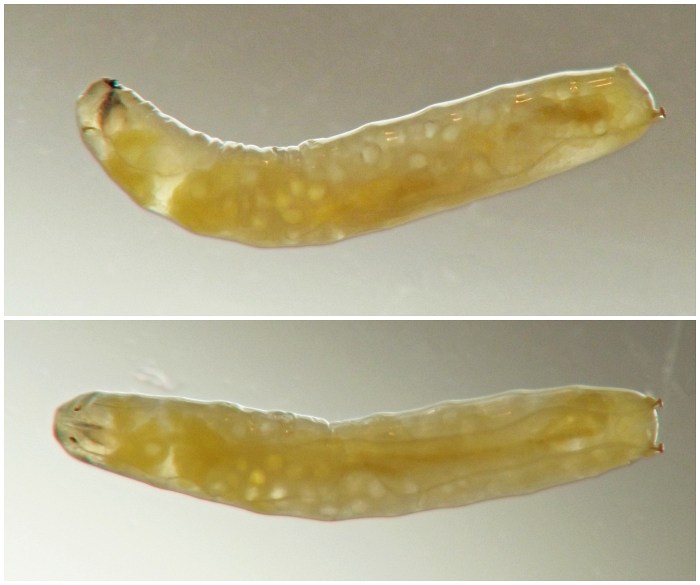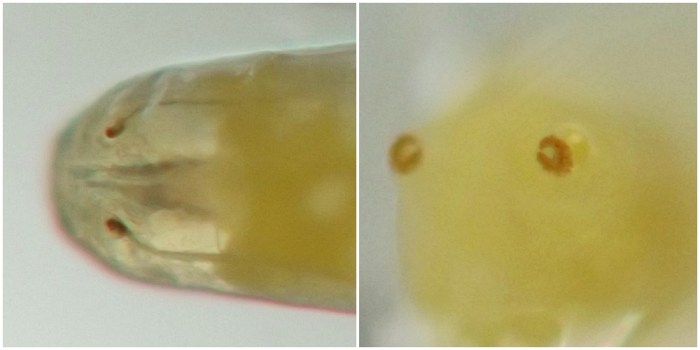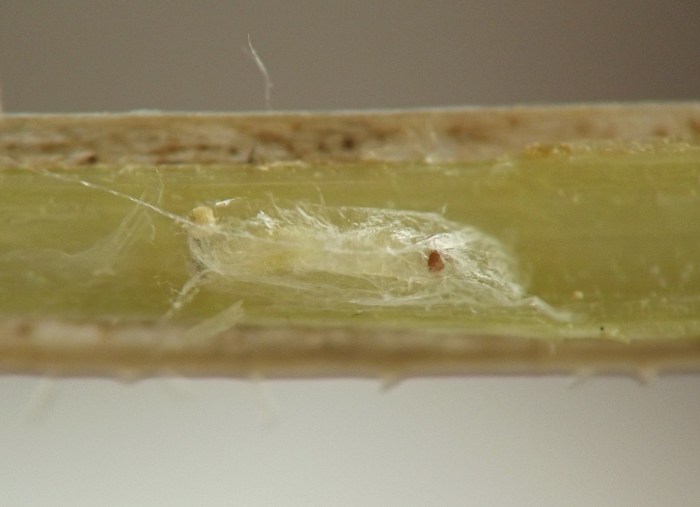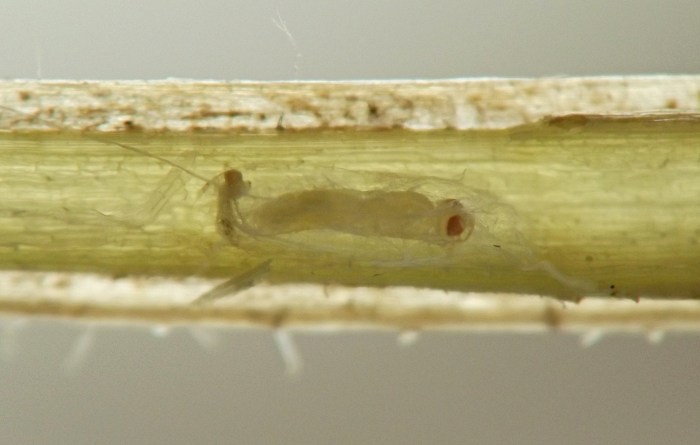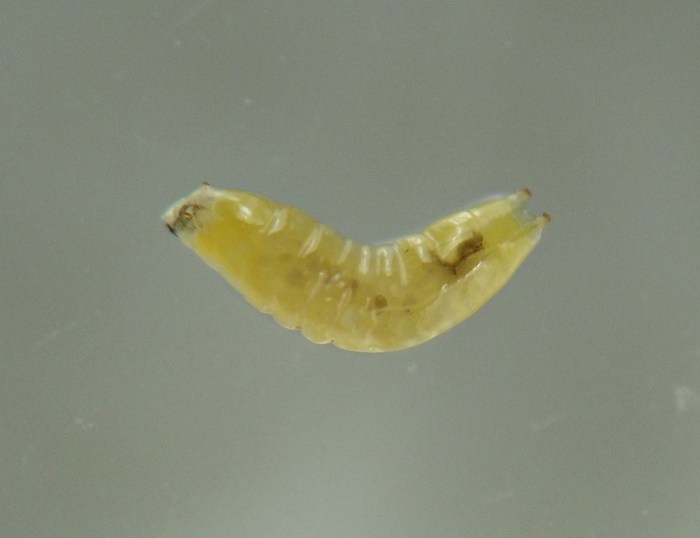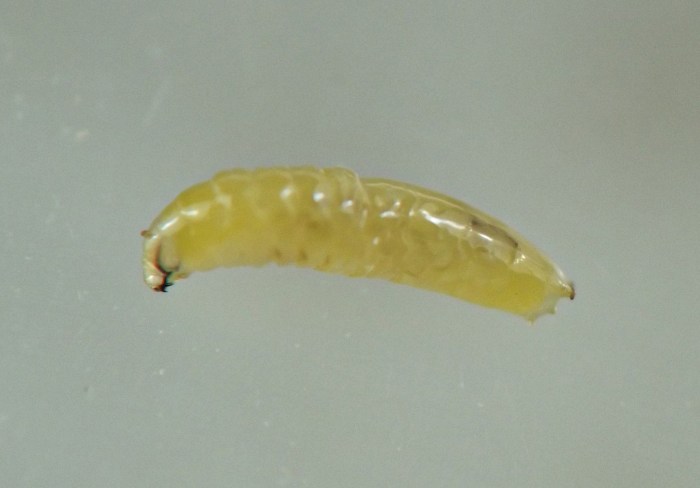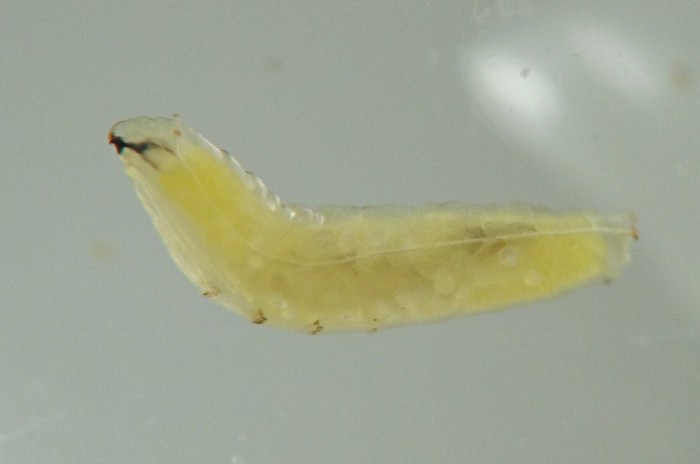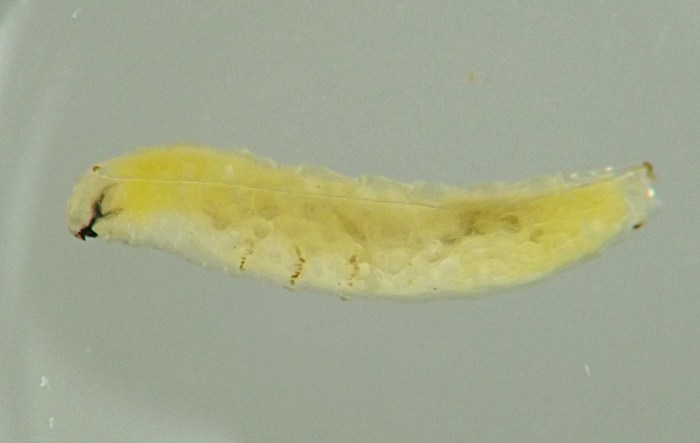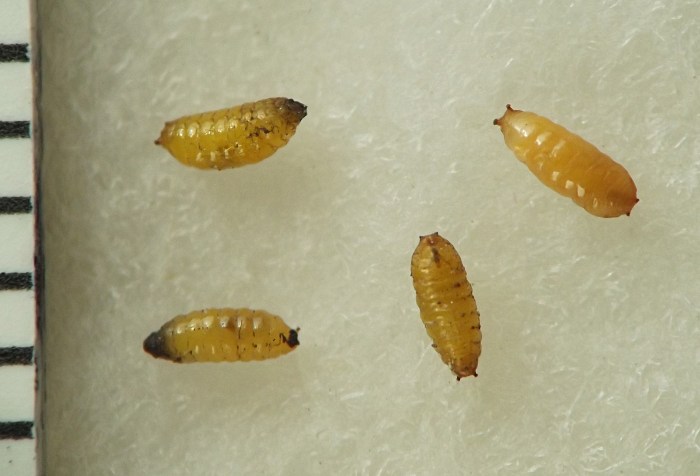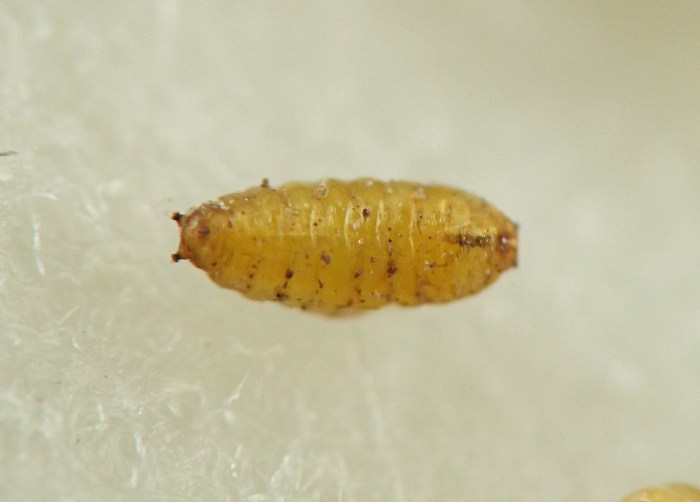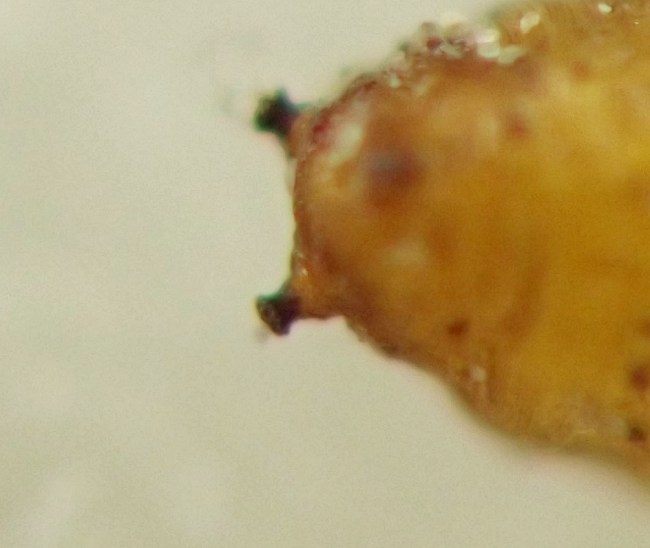Stem borer (Diptera: Agromyzidae) in Galium (#0246)[0246]
| Order | Diptera |
|---|---|
| Family | Agromyzidae[T,L,P] |
| Lower taxon | Phytomyzinae |
| No. spp. involved | One confirmed |
| Feeding mode | Stem borer |
| Host plant | Cleavers, Galium aparine (Rubiaceae) |
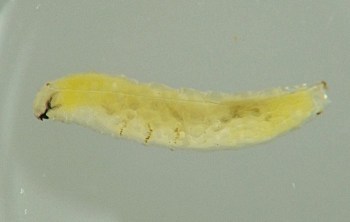
This species feeds inside the core of the host stem in late spring and early summer. It was first detected in the current study as young larvae in stems that were already fruiting at the tops and beginning to senesce at the bottoms in early June. The following excerpt from the author's notes describes the nature of the host's stem tissue structure and the larva's relationship to it.
The nodes of Galium aparine are solid and the internodes seem to generally have some hollowness to them, especially in the most robust sections of stem in the middle lengths of the plant, but with some variable pithiness lower in the plant and near the nodes. If you do a cross section of the internodes in the middle lengths of the plant there is generally a nice round hole in the middle but this hollow core does not separate easily from the more outer layers of tissue, unlike in [G. ?triflorum]. [The larva] seems to be...mostly free-living in the hollow areas [of the internodes] where it grazes on the inner walls of the stem or possibly plows a shallow channel through them. ... [It also] tunnels through the pithy areas at or near the nodes [but this node feeding appears limited to the bare miminum, only whatever tunneling is required to pass through the node in order to get from one internode to the next].
When mature, around the first week of July, when the host plant stems have almost fully senesced, the larva cuts an exit hole in the wall of the stem and abandons the stem, forming its very small yellowish puparium off the plant. Rearing efforts from the current study in 2023 indicated that the puparium overwinters and adults emerge in spring. The 2023 season was unkind to this species in terms of parasitism in the populations examined by the author; a high percentage of larvae succumbed prior to reaching the puparium stage, and the parasitoid wasps that fed on them could be found in individual cocoons here and there in the interiors of affected stems.
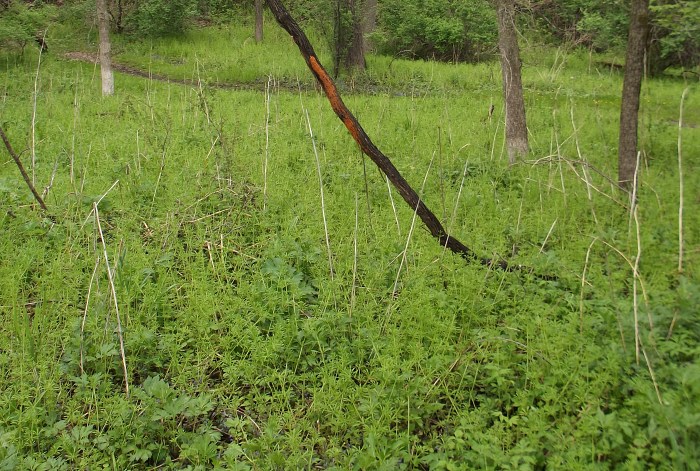
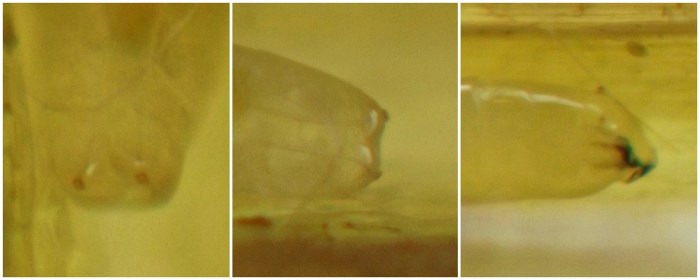
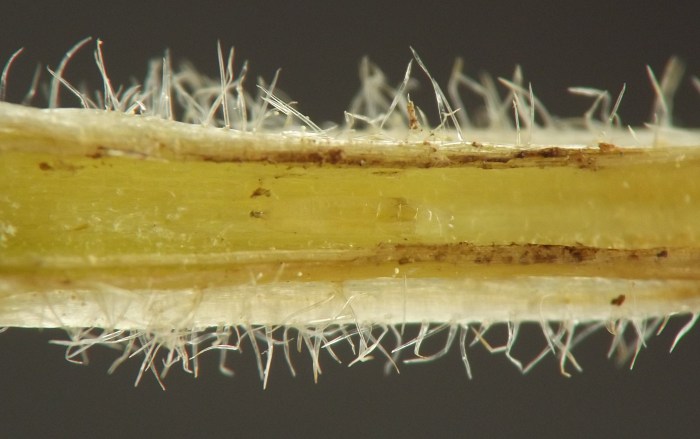
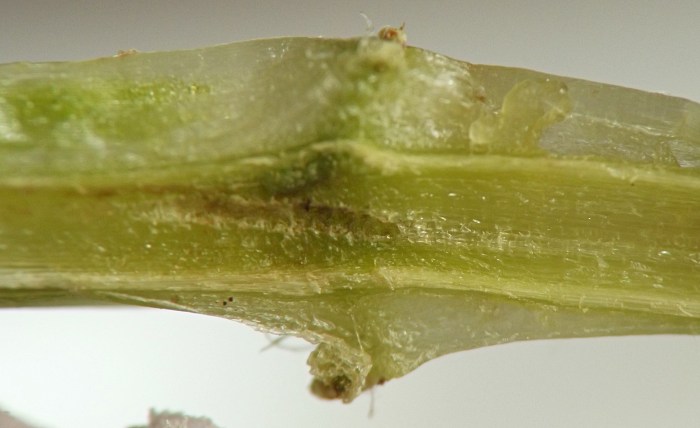
Specimen data for images
Field photo taken 05/03/21 (01); coll. 06/05/23, photos same day (02, 03, 07, 08); coll. 06/09/23, photos taken on 06/10/23 (04-06, 09-11); plant material coll. 06/09/23, stem dissected and larva photographed on 06/20/23 (12-13); coll. 06/22/23, photo taken on 06/23/23 (14); coll. 06/27/23, photos taken on 06/28/23 (15-20); plant material coll. 06/27/23 & 06/28/23, mature larva and several puparia found loose in rearing containers on 07/08/23 and photographed same day (21-29).
References
[none]
Page created 10/28/23. Last update: 11/17/24

